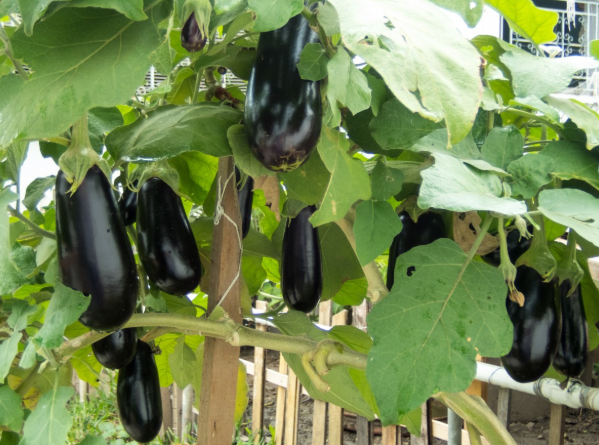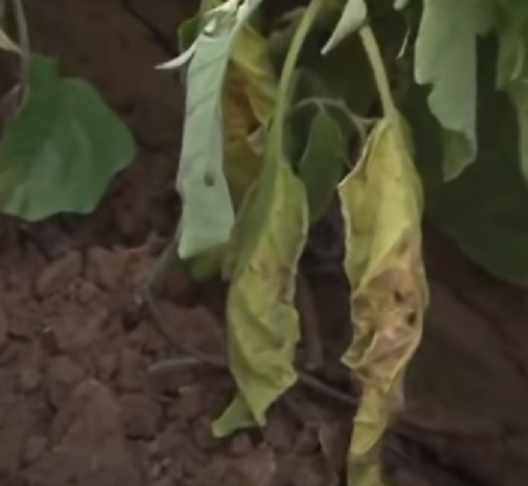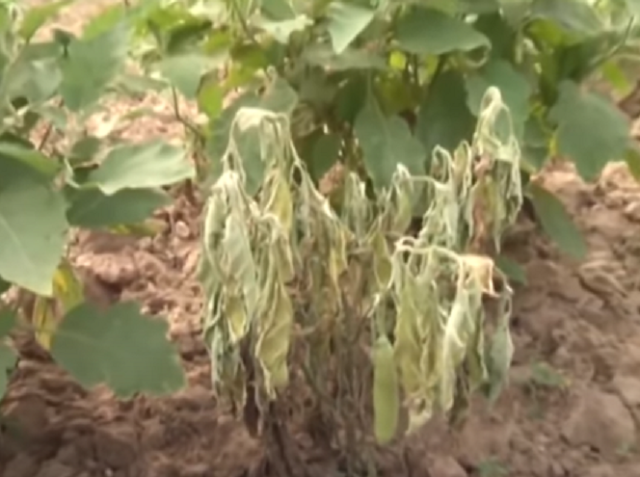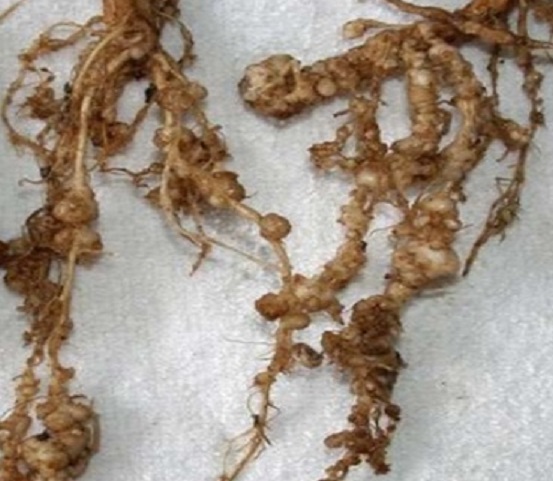Cultivation of Brinjal or eggplant (Solanum melongena L.)
Brinjal or eggplant is the most common crop of tropical regions it is commercially grown in almost all parts of the country. Brinjal is a perennial crop but cultivated commercially as an annual crop.
Common Name of Brinjal in India;
Baingan (Hindi ), Begun (Bengali), Badane (Kannada), Waangum (Kashmiri), Vange (Marathi), Ringa (Gujrati), Baigan (Oriya), ashuthana(Malayalam), Kathiri(Tamil),Venkya(Telgu),Peethabhala(Sankskrit)
Nuritive and Medicinal Value of Brinjal;
Brinjal or Eggplant is a very rich of dietary fiber, vitamin B1 and copper. It is also a good source of manganese, vitamin B6, niacin, potassium, folate and vitamin K. Brinjal plant also contains phytonutrients like as nasunin and chlorogenic acid. Brinjal is also known for its medicinal properties and has got de-cholestrolizing property. primarily due to the presence of poly-unsaturated fatty acids (linoleic and lenolenic) present in flesh and seeds of fruit in higher amount (65.1%). Presence of magnesium and potassium salt in fruits also impart de-cholestrolizing action.
Climate Requirement for Brinjal Crop ;
Soil Requirement for Brinjal;
Brinjal crop can be grown in all kind of soil . Light soil is good for early yields whereas silty loam is well suited for good yields. Soil should be well-drained rich in organic matter with a pH range of 6.75 to 7.5 for its cultivation.
Seasons ;
There are three main seasons of the brinjal crop in India.
- Autumn- winter Crop; Sown in June Transplanted in July
- Spring-Summer crop; Sown in early November and transplanted in January – February.
- Rainy Season Crop; Sown in March -April and transplanted in April May.
Varieties of Brinjal ;
1) Varieties developed By IIHR ;
Sowing of Brinjal Crop ;
Seed Rate ;
Varieties; 400 gms./hactare
Hybrids; 200 gms/hectare
Seed Treatment;
Seeds are treated with Trichoderma viride @ 4 g / kg or Pseudomonas fluorescens @ 10 g / kg of seed.
Rasing of Nursery Bed ;
1) Prepare the nursery bed of size 3meter x 1 meter with a height of0.15 meters height.
4) For the preparation of a 1-hectare nursery, a 100 square meter area is required.
8) There should be no water stagnation in the beds to avoid the damping-off disease.
Transplanting ;
Seedings of the 4-5 weeks (12-15cms plant height with 3 to 4 leaf stage) are ready to transplant in the main field. Transplanting should be accomplished during the evening hours followed by irrigation.
Spacing;
- For Varieties; 60 x60 Cms.
- For Hybrids; 90 x60 Cms.
Irrigation ;
Inter-cultivation in Brinjal Crop ;
Manuring and fertilizer requirements;
1) About 20-25 tonnes of F.Y.M. per hectare is applied at the time of field preparation. A dose of 100 kg each of N, and 50 kg potash and 50 kg P per hectare are given for good yield. 1/3 rd of nitrogen, the full amount of P and K should be given as a basal dose.
3) Apply 2 kg of Azospirillum and Phosphobacteria in the main field at planting. Spray 2 ppm (1 ml in 500 lit.)Triacontanol plus Sodium borate or Borax 35 mg/lit. of water 15 days after transplanting and at the time of full bloom to increase the yield.
Disease and Pest Management of Brinjal Crop ;
Disease Management ;
1) Damping Off: (Pythium spp., Phytophthora spp., Rhizoctonia spp., Sclerotium spp., Sclerotinia spp.)
The Post-emergence damping-off phase can be visualized by infection of the young, juvenile tissues of the collar at the ground level. The affected seedlings become pale green and brownish lesions are found at the collar region, which results in bottling and topple over of seedlings.
It Causes a characteristic spot on the brinjal leaves with concentric rings. Infested leaves may drop off. Brinjal fruits may also be affected that turn yellow and it may drop off prematurely.
The characteristic symptoms include wilting of the foliage followed by the collapse of the entire plant. The wilting is characterized by dropping and slight yellowing of leaves and vascular discoloration. Drying of plants at the time of flowering and fruiting are also characteristic of the disease condition. The affected cut stems pieces when dipped in water, a white milky stream of bacterial oozes coming out which is the diagnostic symptom for bacterial wilt.
Fruit and shoot borer is the most destructive pest of brinjal. It is widely present in the Indian sub-continent and also in Thailand, Laos, South Africa, Congo, and Malaysia. It also Damages potatoes and other solanaceous crops. This pest is active around the year at places having moderate climate but it is adversely affected by severe cold (To improve this paragraph). The damage by this insect initiated just after transplanting of the seedlings and continues till harvest of fruits. Eggs are laid singly on the ventral surface of leaves, shoots, and flower-buds and occasionally on fruits. In young brinjal plants, the presence of wilted drooping shoots is the typical symptom of damage by this pest; these affected shoots ultimately wither and die away.
The pest is polyphagous in nature. The full-grown larvae are greenish with dark broken grey lines along the side of the body. They measure about 35-45 mm long. The moth of this pest is quite larger and brownish in color with a V-shaped speck and dull black border on the hind wings. The larvae are first starting their feeding on leaves and fruiting bodies of the plants and at later stages, they bore into the fruits, completely eating away the internal contents.
The nymphs and adults of the aphids are just like a louse and creamy greenish in color. The most active period of this pest is between December to March when various cruciferous and vegetable crops are available in the fields. The damage is done by its nymphs and adults by sucking cell sap from the brinjal leaves, stems, inflorescence or the developing plants. They are seen feeding in large groups, very often they cover the entire surface to feeding on cell sap, the vitality of plants is greatly reduced. The leaves acquire a curly shape in appearance.
The nymphs and adults of this insects are very agile and more briskly forward the sideways. Adults are about 3 mm long and greenish-yellow in colour during summer periods, while acquires a reddish tinge during the winter periods. Nymphs and adults remain in large groups and suck the sap from the undersurface of the leaves. They inject the toxin saliva into the plant tissues during their feeding process. The leaves show characteristic symptoms of hopper burn such as yellowing upward curling, bronzing and even drying of leaves. The crop growth becomes stunted and is very often in highly susceptible varieties it may cause complete mortality of the plants.
Plant-parasitic nematodes (Meloidogyne spp.i.e. incognita, javanica) are the most common in India and infestation due to these parasitic nematodes is very common in brinjal. The root-knot nematode gives more harmful damage to brinjal seedling rather than to older plants. These nematodes infestation cause root galls in the roots of the brinjal plant. The infected plant becomes stunted and the leaves show chlorotic symptoms. The infestation of these nematodes greatly reduces the yield of the crop.
The first picking of the fruit starts about 120-130 days of seed sowing depending on the variety. The harvesting of the fruits should be accomplished as soon as the fruit attains a good size and color. when the Fruits become greenish-yellow or bronze and their flesh turns a little bit dry and tough is the best time for harvesting. Since all the fruits do not mature at the same time, the fruits should be harvested at an interval of 8-10 days.











Pingback: Multi-layer farming Model Objective Process and Advantages - Agrovista-Farming
Pingback: Easy Steps to Produce Your Own Vegetable Seeds; A Information Guide for Beginners - Agrovista-Farming
Pingback: Cultivation of Baby Corn; Zea Mays L. - Agrovista-Farming